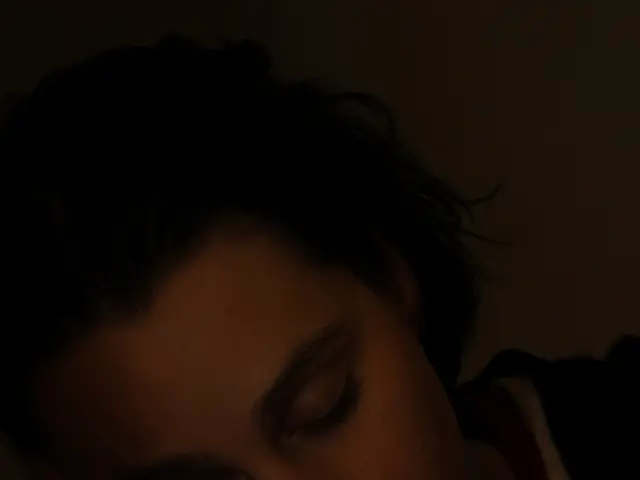Could dreams somehow facilitate communication with others during slumber, as suggested by this study?
Man, have you ever thought about the far-out possibility of communicating in dreams? Well buckle up, buddy, because today's tech might just make that a reality.
While we can't exactly beam thoughts into each other's brains yet (no thank you, Skynet), there's been some progress. You see, machine learning can interpret brain signals to visualize our dreams, but what if we wanted more than just a peek?
Well, dreaming about sending your thoughts directly to a buddy's noggin might make you a tad uneasy. I mean, computers pushing ideas into your skull while you're caught in the REM cycle? Ain't nobody got time for that!
Right now, our only option is to stick with what we've got – our senses. Whispering sweet nothings into someone's ear while they're napping is one way of sharing info with them. But let's not kid ourselves – talking in our sleep and listening to noises while dozy ain't exactly easy.
Somniloquists – those who speak in their sleep – usually mumble and burble out nonsense, and it ain't under conscious control. And listening to sounds while snoozing? Forget about it – it'll likely just disrupt your Zs and stress these dreamers out.
But there's one kind of dreaming that might help us out here: lucid dreaming. You know, the rare occurrence where the dreamer's aware but still asleep? Could two consciousnesses meet up in this state, allowing for actual communication?
A company called REMSpace claims they've done just that. They used external stimuli to help one sleeper enter a lucid dream state, then communicated a word to 'em via earbuds. The lucid dreamer then repeated the word, which was stored on a computer, and passed onto another lucid dreamer eight minutes later. And guess what? The message was confirmed on waking. Not exactly practical yet, but it was a start.
There's another kind of shared thought that might be more useful, though. Researchers are finding that people who work closely together start to synchronize their brain waves. It's like when musicians feel perfectly in sync, or a group of friends becomes super tight.
This inter-brain neural synchronization, as it's known, can be observed through detailed hyperscans using electroencephalogram (EEG) scanners. These scans measure the different brainwaves – theta (when we're very relaxed), alpha (when we're calm), or beta (when we're alert and active) – and reveal how their rhythms sync up between individuals.
When these brainwaves – typically driven by beta waves – synchronize between two or more individuals, they work better together, are more empathetic, and even experience less pain. Teams that are in synch neural-wise perform better overall.
The best part is, no artificial intelligence or brain scanners are needed. Sharing experiences with others is all it takes. You could jam out to some music, dance, solve problems, or just talk to each other. It's a free and natural way to maintain a mental connection.
So, while whispering sweet dreams to a sleeping buddy might seem like a lofty goal, communicating through dreams is still a long way off. But the way humans' brains synchronize during social interaction gives us hope for future possibilities. Keep dreaming, friends!
- In the future, one might wonder if the development of technology could allow for communication in dreams, a concept that seems like science fiction today.
- Over the course of nature's evolution, it's fascinating to observe how human brains have the potential to synchronize during social interaction, a phenomenon that could pave the way for better cooperation and empathy.
- As technology progresses, researchers are exploring the possibility of using it to aid in communication during lucid dreams, a concept that brings to mind the science fiction genre and its portrayal of shared dreamscapes.
- In the realm of health-and-wellness and lifestyle, practicing techniques to develop lucid dreaming skills could open up a new avenue for communication, potentially bridging the gap between individuals even during their deepest slumber.
- Looking beyond the realm of entertainment, the future of science and technology could hold breakthroughs that enable us to communicate not just through words and actions, but also in the shared dreamscapes of our nocturnal minds.








